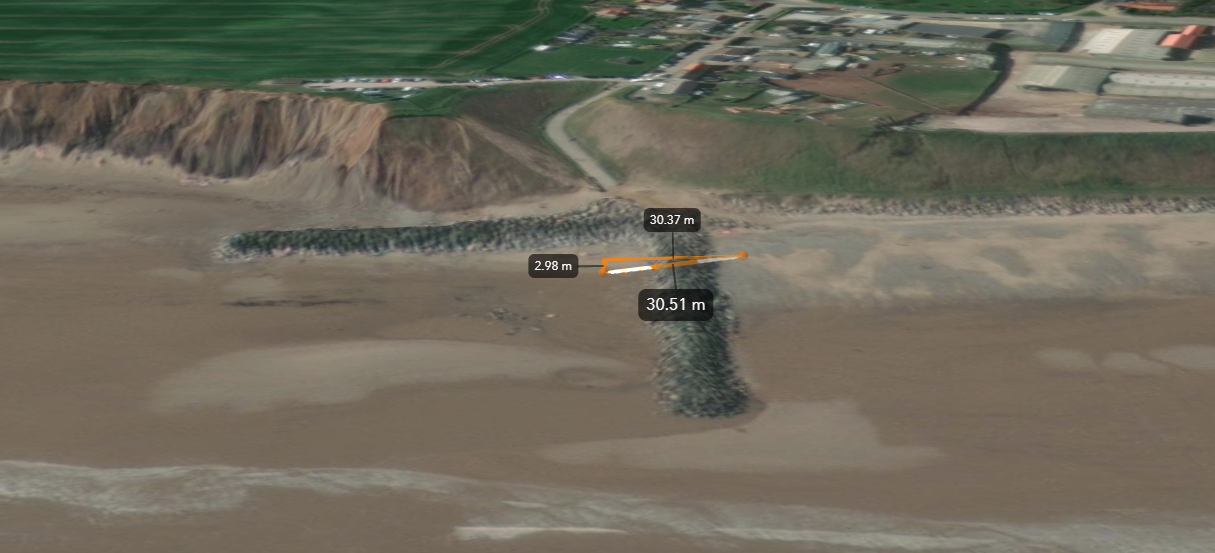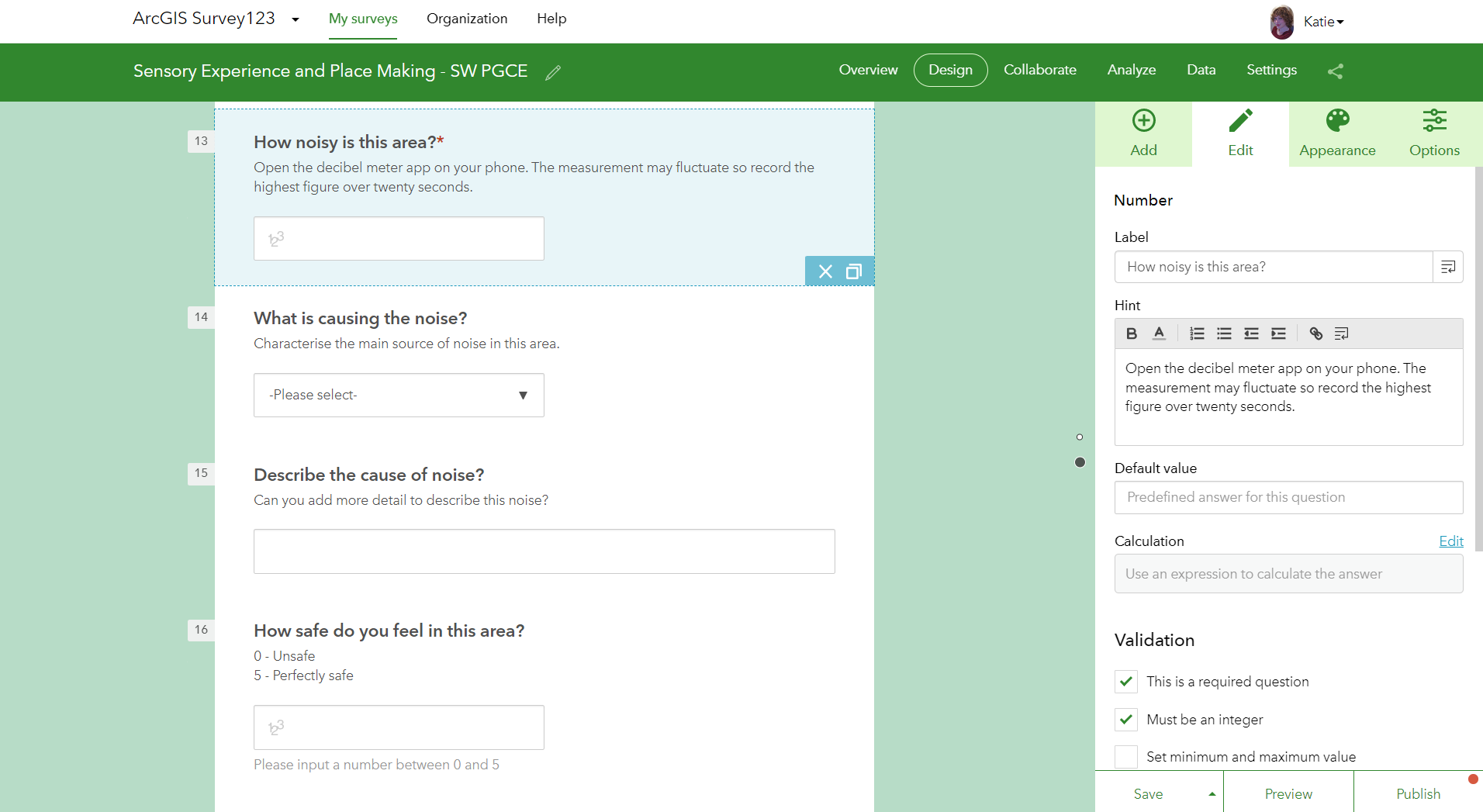The role of GIS in supporting fieldwork
30 May 2023
Katie Hall and Dave Morgan, Esri UK

The use of digital technologies to support fieldwork in schools is growing rapidly, with teachers seeking to maximise the benefits that technology offers, while retaining the value of getting students out of classrooms and hands-on in the real world.
Using these technologies also allows students to get a taste of how professional geographers will engage with the field across a range of industries. In this blog, we take a look at the role geographical information systems (GIS) can play in engaging and rewarding fieldwork across the curriculum.
How can GIS augment what we do to achieve even better outcomes for students? What new practices does it enable to push the boundaries of the possible and equip young people with the digital skills they need?
Virtual fieldwork: democratising the field
The idea of fieldwork that takes place wholly in a virtual environment can be uncomfortable for us to confront. Surely an integral part of fieldwork is the awe and wonder that being immersed in a space can generate? For many of us that spark is what led to our own career in the geography sector. But while a digital experience can never replace practical fieldwork, there are enormous benefits to deploying virtual fieldwork alongside traditional trips to coasts, rivers and urban centres.
Firstly, virtual fieldwork can democratise geography by making places more accessible. Using ArcGIS Scene as a visualiser, we can visit a field site in advance and help prepare our students for the landscape they are going to encounter. Issues around accessibility – in terms of slopes, steps, distance travelled, and even appreciating what the location might be like in different weather conditions – can all be addressed in advance. For most of us this will take place on a screen in a classroom, but Scene will allow schools with access to VR headsets to easily share 3D maps as fully immersive experiences.

GIS Visualiser
We can also run experiments virtually that students will conduct in person on the day. For example, we can calculate the difference in height either side of a rock groyne at a coastal location (see below) and then compare this to data collected at the same location. Doing this means we lighten the cognitive load for students. We can go through the principles underlying the investigative method in their usual classroom, and then focus on the practical aspect and demands of an unfamiliar environment on their day in the field.

Rock groynes
This approach also lets us visit sites that would be too distant or too dangerous, as well as places that would be environmentally unsustainable or too expensive to take students. Not all of us are fortunate enough to live in easy reach of a post-glacial landscape. But a GIS visualiser allows us to explore examples from the UK and compare them with those in the Alpine region. We can visit the craters of active volcanoes to see how they fit our models of shield or stratovolcano. We can even look at evidence for geographical processes on other planets, taking geography truly out of this world.

GIS image of Mars
Hyperlocal fieldwork: continuous engagement with lived geographies
As with virtual fieldwork, there can be concern that fieldwork focussed on the local area is somehow less meaningful; that it is something done “just for the sake of it” or to “practice” for the real thing.
Let’s turn this argument on its head. Hyperlocal approaches show our students that nothing of what we teach is disconnected from the real world. Geography is not pure theory. Ideas are generated and tested through engagement, and your students’ immediate surroundings are not any less “real” than any river or coastline we might visit. They will be worthy of being their own case study – but they may well connect to a different part of the curriculum!
How does a hyperlocal approach work? Apps like Survey123 allow for instant data collection. There is no need to send out a survey and then book a computer suite for data entry. Students collect datasets straightforwardly on their route to and from school, using devices like their smartphones as sensors. An example could be environmental quality at student bus stops. This can be used as a front of class resource in their next lesson – how well does their locality fit the models for understanding space and place?
This kind of approach allows your geographers to really dig into the geography that’s all around them. It’s not being left in the classroom when the bell rings. They’re living in it, moving through it, breathing it in every day – and now attending to it more closely.
Traditional fieldwork: equipping students with 21st century skills
When it comes to what we might call “traditional” geography fieldwork – the students on a bus, far from their usual classroom variety – GIS also has an important role to play. We can use that same GIS visualiser approach to explore the location to be studied, using basemaps and secondary data sets to develop questions that are grounded in the place rather than the textbook, and plan an appropriate way to sample.
Out in the field there are no more soggy workbooks – Survey123 enables more rapid, accurate data collection. Quality control is built in during initial design (see below). Data is uploaded effectively in real time and you can see which students are collecting what data. Gaps can be spotted as they are developing, allowing for a quick re-adjustment of sampling strategy (or intervention with students not engaged on task!).

Survey123 screenshot
Returning from the field, as mentioned above, there is no need for additional data entry. Students have immediate access to fieldwork data they have collected, as simple data visualisations, maps and tables that can be loaded into spreadsheet software.
This helps us keep geography at the forefront, immediately able to investigate patterns, correlations and links in data we have collected rather than waste time transferring data from clipboard to computer. It’s also easy to filter this data, to give students their own collection as a primary dataset and everyone else’s as secondary data before adding in additional secondary data sets to help make sense of the patterns (or anomalies) that they have noticed.
This approach mirrors how contemporary professional geographers engage with the field. Real-time, digital technologies are at the forefront of how our environments are measured, explained and managed.
In conclusion
Undertaking GIS-enabled fieldwork gives our students experience of using the approaches and technologies they will encounter in higher education and industry. Marrying this with the tried and tested bedrock foundations of geographical fieldwork will only be to their advantage.
For more detail on how GIS technologies are helping geographers access exciting and rewarding careers, see the Careers with GIS website.
To learn more about enabling fieldwork with ArcGIS Online, find free training events in person and online via the Events page on Teach with GIS UK.
Stay connected
Please share ideas below, send them to geography@ocr.org.uk or tweet @OCR_Geography. You can also sign up for email updates for information about resources and support.
About the authors
Katie Hall’s GIS journey began in archaeology, using the technology to tell stories of everyday life in Viking Age Orkney, and she completed a PhD in geo-archaeology. A career change to geography teacher opened up new interests in the pedagogy of teaching with GIS, and how it can improve teaching and learning within geography. She was the winner of the Jack Dangermond Young Scholar Award for her work on using GIS in the classroom. At the Esri User Conference she was inspired to see the impact GIS is having in classrooms around the world.
Dave Morgan’s background is in outdoor and environmental education, teaching geography and biology fieldwork to learners of all ages at the Field Studies Council. This was where he first encountered GIS when it appeared on new GCSEs and A Levels. Before joining the team at Esri UK he was FSC’s lead on education technology, equipping teachers and students with cutting-edge skills for fieldwork and independent investigation. Alongside his work at the FSC he completed a MSc in Applied GIS, showing him the many ways that GIS is used in the “real world”. Since joining Esri UK he has been amazed to see the huge breadth of industries that our customers work in!